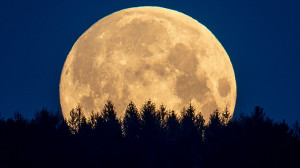
The word “eclipse” is sure to get amateur astronomers around the country excited. Pair that with the Fourth of July, and we’ve got twice the reason to stay up late and look toward the skies!
According to NASA the penumbral lunar eclipse will begin at 11:07 p.m. EDT on Saturday, July 4, reach its peak around 12:30 a.m. Sunday and wrap up at 1:52 that same morning. The entire process will be visible across most of the United States.
By definition, a penumbra is a partially shaded outer region of a shadow. See the above breakdown, showing the umbral vs. penumbral shadow during a solar eclipse. A penumbral shadow is not nearly as dark; it’s more like the fringe of a shadow.
To lessen the impact further, this will also be a partial eclipse, meaning the entire moon won’t be affected.
NASA describes the result as a subtle gradient, with the moon remaining overall bright in appearance.
Regardless of if you notice the shadow or not, we can expect a beautiful full moon to light up the sky alongside fireworks this holiday. Known as a the Buck Moon, the Thunder Moon and the Rose Moon, it will be completely full just after the peak of the eclipse at 12:44 a.m. EDT, according to NASA.
The next time we see a full moon on the Fourth of July won’t be until the year 2031!